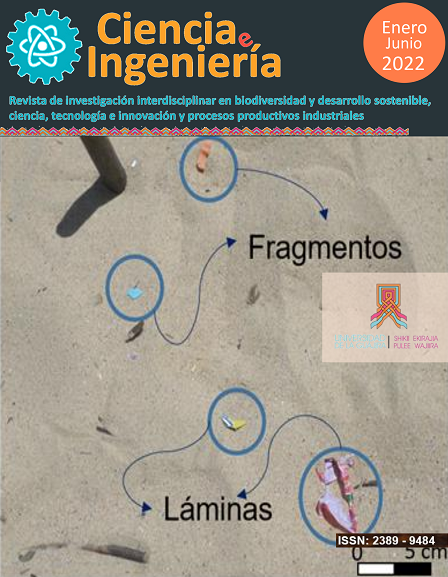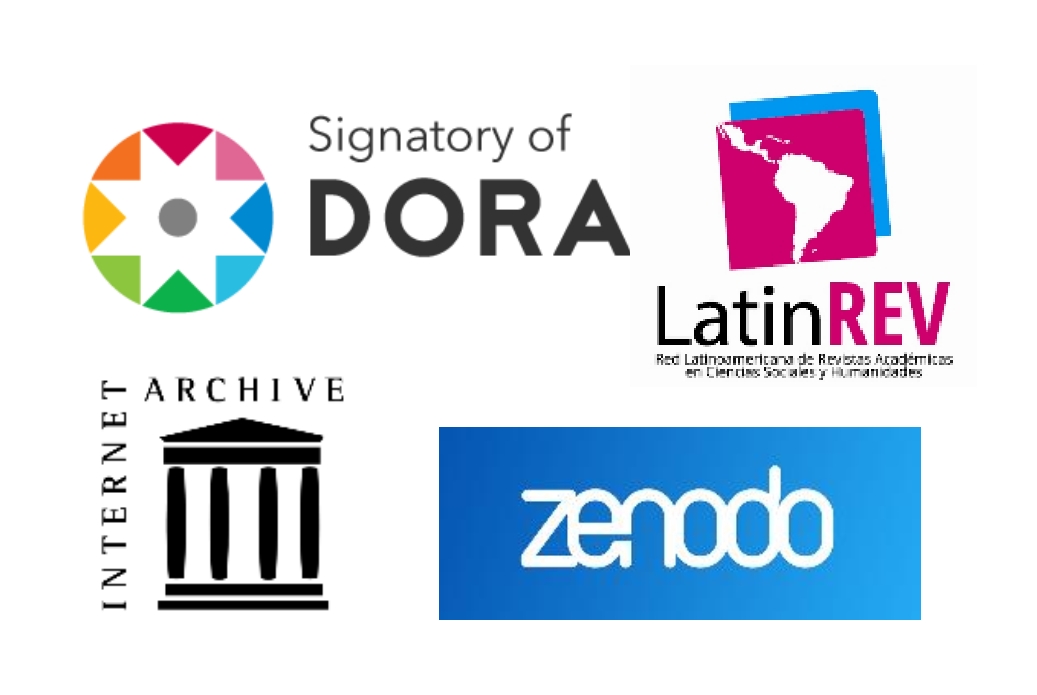Characterization of fungy that produce lipase enzymes
DOI:
https://doi.org/10.5281/zenodo.6708445Keywords:
Lipolitic fungi, biosynthesis, isolation, organic matterAbstract
Fungi are abundant and widely distributed organisms in nature, they are responsible for natural cycles of nutrient replacement; its growth and metabolic processes can be used for human and ecological benefit in the synthesis of a variety of molecules with interesting chemical-biological properties. This review article presents an analysis of the main fungi that produce lipase enzymes, with the main objective of characterizing the microorganisms that have the capacity to produce lipases for biotechnological uses, thus determining the lipolytic activity and productivity of these enzymes; Therefore, literature from different authors is reviewed, stating that the genus Aspergillus sp is one of the best producers of this type of enzyme, these biological catalysts being very useful in biotechnological processes, occupying the vast majority of the world market for enzymes.
Downloads
References
Aguirre-Acosta, E, Ulloa, M., Aguilar, S., Cifuentes, J., Valenzuela, R. (2014). Biodiversidad de hongos en México, Revista Mexicana de Biodiversidad, vol. 85, pp. 76–81.
Akoh, C., Lee, C., Liaw, C., Huang, H., Shaw, F. (2014). GDSL family of serine esterase/lipase. Rev. Program Lipids. 43(13), 534-52.
Alarcón, M. R. (2008). Producción de la Lipasa LIP2 de Candida rugosa en el Sistema Pichia pastoris: Caracterización y Aplicación en Reacciones de Síntesis. Tesis. Universidad Autónoma de Barcelona, España, pp. 201.
Aravindan, R. (2017). Lipase applications in food industry. Indian Journal of Biotechnology. 6(4), 141-58.
Brady, L., Brzozowski, A. M., Derewenda. Z. S., Dodson, E., Dodson, G., Tolley, S., Turkenburg, J. P., Christiansen, L., Huge-Jensen, B., Norskov, L., Thim, L., Menge, U. (1990). A serine protease triad forms the catalytic centre of a triacylglycerol lipase. Nature. Vol. 343, pp. 767-770.
Burkert, F. M., Maugeri, F., Rodrigues, M. (2004). Optimization of extracellular space lipase production by Geotrichum sp. using factorial design. Bioresour. Technol, vol. 91, pp. 77-84.
Burt, S. A., Reinders, R. D. (2003). Antibacterial activity of selected plantes sential oils against Escherichia coli O157:H7. Rev. Lett Applied Microbiology. 36(39), 157-62.
Castro, F. F., Ponchio, A. B., Nassur, C. B., Parra, I. (2017). Mycelium-bound lipase from a locally isolated strain of Aspergillus westerdijkiae. Biocatal. Agric. Biotechnol, Vol. 10, pp. 321-328.
Coca, J., Hernández, O., Berrio, R., Martínez, S., Díaz, E., Dustet, J.C. (2001). Producción y caracterización de Aspergillus niger y A. fumigatus. Biotecnol. Aplic, vol. 18, pp. 216-220.
Colla, L.M., Rizzardi, J., Pinto, M.H., Reinehr, C.O., Bertolin, T.E., Vieira, J.A. (2010). Simultaneous production of lipases and biosurfactants by submerged and solid-state bioprocesses. Bioresour. Technol, vol. 10, pp. 8308-8314.
Crespo-Erchiga, V. (2008). Generalidades sobre los hongos. Dermatomicosis: saproficias y dermatofitosis. Piel, vol. 23 (7), pp. 389–396.
Damaso, M.C., Salum, F.C., Terzi, S.D., Couri, S. (2013). Assay Methods for Lipase Activity. Methods to Determine Enzymatic Activity, (Bentham.). Rio de Janeiro.
Domínguez, A., Costas, M., Longo, M.A., Sanromán, A. (2003). A novel application of solid state culture: Production of lipases by Yarrowia lipolytica. Biotechnol. Lett, vol. 25, pp. 1225-1229.
Ertugrul, S., Donmez, G., Takac, S. (2007). Isolation of lipase producing Bacillus sp. From olive mill wastewater and improving its enzyme activity. J Hazard Mater. Nov 19; 149 (3): 720 – 724
Fjerbaek, L., Christensen, K.V., Norddahl, B. (2009). A review of the current state of biodiesel production using enzyme tictransesterification. J Bio and Bioeng.
García-Román, M. (2005). Hidrólisis enzimática de triglicéridos en emulsiones o/w. Aplicación a formulaciones detergentes. Universidad de Granada. España.
González, J., Hernández, J., Rodríguez-Martínez, A.D. (2010). Las lipasas: enzimas con potencial para el desarrollo de biocatalizadores inmovilizados por adsorción interfacial. Revista Colombiana de Biotecnología, vol. 12, pp. 124-140.
Gupta, R., Kumari, A., Syal, P., Singh, Y. (2015). Molecular and functional diversity of yeast and fungal lipases: their role in biotechnology and cellular physiology. Prog. Lipid Res, vol. 57, pp. 40-54.
Hasan, F., Shah, A.A., Hameed, A. (2006). Industrial applications of microbial lipases. Enzyme and Microbial Technology, vol. 39(2), pp. 235-251.
Hasan, F., Shah, A.A., Hameed, A. (2009). Methods for detection and characterization of lipases: A comprehensive review. Biotechnol. Adv, vol. 27, pp. 782-798.
Hawksworth, D.L. (2017). The magnitude of fungal diversity: the 2.2 a 3.8 million species estimate revisited. Mycol. Res, vol. 105, pp. 1422–1432.
Jaeger, K.E., Eggert, T. (2002). Lipases for biotechnology. Current Opinion in Biotechnology.
Kaushik, R., Saran, S., Isar, J., Saxena, R.K. (2006). Statistical optimization of medium components and growth conditions by response surface methodology to enhance lipase production by Aspergillus carneus. J. Mol. Catal. B Enzym, vol. 40, pp. 121-126.
Kavitha, M. (2016). Cold active lipases an update. Frontiers in Life Science, vol. 9(3), pp. 226- 238.
Kempka, A.P., Lipke, N.L., Da-Luz P.T., Menoncin, S., Treichel, H., Freire, M.G., Di-Luccio, M., De Oliveira, D. (2008). Response surface method to optimize the production and characterization of lipase from Penicillium verrucosum in solid-state fermentation, Bioproc. Biosyst. Eng, vol. 31, pp. 119-125.
Lukovi, N., Kneževi, Z., Bezbradica, D. (2015). Biodiesel Fuel Production by Enzymatic Transesterification of Oils: Recent Trends, Challenges and Future, Perspectives and Alternative. Fuel. 36 (4), 10-23.
Ma, F., Hanna, M. A. (2019). Biodiesel production: a review 1. J Bio Tech. 70(15), 15-40.
Norsker, N. H., Barbosa, M. H., Vermuë-Wijffels, R. H. (2015). Microalgal production a close looks at the economics. Rev. Biotechnology Advances. 29(1), 24-7.
Ortiz, P.S., Camacho, R.M., Mateos, J.C., Torres, A.A., Rodríguez, J.A. (2014). Búsqueda de enzimas lipolíticas de interés biotecnológico en actinomicetos del desierto de sonora, Centro de Investigación y Asistencia en Tecnología y Diseño del Estado de Jalisco A.C.
Pereira, A. da, S., Fontes-Sant’Ana, G.C., Amaral, F.F. (2019). Mango agro-industrial wastes for lipase production from Yarrowia lipolytica and the potential of the fermented solid as a biocatalyst. Food Bioprod. Proc, vol. 115, pp. 68-77.
Rodríguez-Sauceda, E. N. (2016). Uso de agentes antimicrobianos naturales en la conservación de frutas y hortalizas. Rev Soc Cult y Des Sust. Ra Ximhai. 7(1), 153-70.
Sahay, S., Chouhan, D. (2018). Study on the potential of cold-active lipases from psychrotrophic fungi for detergent formulation. J. Genet. Eng. Biotechnol, vol. 16, pp. 319-325.
Sánchez-Ferrer, A. (1998). Recuperación, purificación y caracterización de lipasas producidas por Candida rugosa, aplicación a la resolución de compuestos quirales y diseño del reactor enzimático, Universidad Autónoma de Barcelona.
Sharma, D., Sharma, B., Shukla, A.K. (2011). Biotechnological approach of microbial lipase: A review. Biotechnology.
Sharma, R.C., Yusuf, C.U., Banerjee, U.C. (2001) Production, Purification, Characterization, and Applications of Lipases. Biotechnology advances.
Singh, A.K., Mukhopadhyay, M. (2012). Overview of fungal lipase: A review. Applied Biochemistry and Biotechnology.
Tan, C.H., Show, P.L., Ooi, C.W., Ng, E.P., Lan, C.W., Ling, T.C. (2015). Novel lipase purification methods-a review of the latest developments. Biotechnol. J, vol. 10, pp. 3144.
Thakur, S. (2012). Lipases, Its sources, Properties and Applications: A Review. International Journal of Scientific & Engineering Research, vol. 3, pp. 1-29.
Trujillo, R. (2006). Aislamiento de hongos productores de lipasas, empleando aceite crudo de palma y determinacion de la productividad lipolítica. Tingo María, Perú.
Vyas, S., Chhabra, M. (2016). Isolation, identification and characterization of Cystobasidium oligophagum JRC1: A cellulase and lipase producing oleaginous yeast. Bioresour. Technol, vol. 223, pp. 250-258.
Yadav, R.P., Saxena, R.K., Gupta, R., Davidson, S. (1998). Lipase production by Aspergillus and Penicillium species. Folia Microbiol, vol. 43, pp. 373-378.
Downloads
Published
How to Cite
Issue
Section
License
Copyright (c) 2022 Orlis Amaya Mejía , Arnold Díaz Morales

This work is licensed under a Creative Commons Attribution-NonCommercial-NoDerivatives 4.0 International License.





